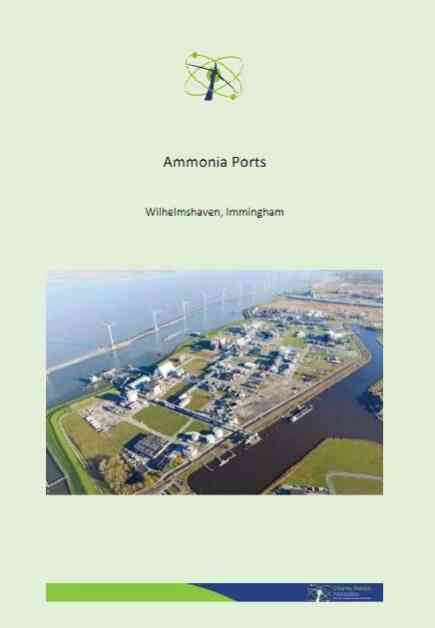In a recent development in the global energy landscape, Air Products is planning to ship ammonia produced in Saudi Arabia to be cracked into hydrogen for use in the UK. The UK government has granted a development consent order for the Immingham Green Energy Terminal in northern England, which will include the necessary infrastructure to convert imported ammonia into hydrogen. This initiative marks a significant step towards utilizing ammonia as a source of hydrogen fuel, opening up new possibilities in the realm of clean energy production and distribution.
Exploring the Potential of Ammonia Ports
Ammonia, a compound composed of nitrogen and hydrogen, has long been recognized as a promising source of clean energy due to its high hydrogen content. By cracking or decomposing ammonia, hydrogen can be extracted and used as a fuel for various applications, including transportation, power generation, and industrial processes. The process of converting ammonia into hydrogen requires specialized infrastructure and technologies, which are now being developed at the Immingham Green Energy Terminal.
The collaboration between Air Products and the UK government represents a strategic partnership aimed at leveraging the potential of ammonia as a green energy source. By importing ammonia from Saudi Arabia and processing it into hydrogen on-site, the Immingham Green Energy Terminal will play a crucial role in expanding the UK’s hydrogen infrastructure and reducing carbon emissions. This innovative approach underscores the importance of international cooperation in driving the energy transition towards sustainability.
Expert Insights on Ammonia Ports and Hydrogen Production
Charley Rattan, a renowned global hydrogen trainer and advisor, highlights the significance of the Immingham Green Energy Terminal project in advancing the energy transition. As a seasoned expert in the field of clean energy, Rattan emphasizes the potential of ammonia ports to revolutionize the production and distribution of hydrogen on a global scale. By upskilling, advising, and informing stakeholders about the benefits of using ammonia as a hydrogen carrier, Rattan aims to accelerate the adoption of clean energy technologies worldwide.
Rattan’s expertise and insights shed light on the complex process of ammonia cracking and its implications for the hydrogen economy. With his extensive experience in training and advising on hydrogen-related projects, Rattan brings a unique perspective to the discussion of ammonia ports and their role in shaping the future of energy. His contributions to the field of clean energy underscore the importance of collaboration and knowledge-sharing in driving sustainable development.
In conclusion, the development of ammonia ports in Immingham, UK, and Wilhelmshaven, Germany, represents a significant milestone in the transition to a cleaner, more sustainable energy future. By leveraging the potential of ammonia as a source of hydrogen fuel, these ports are paving the way for a new era of clean energy production and distribution. With the support of experts like Charley Rattan and strategic partnerships between industry stakeholders and governments, ammonia ports have the potential to transform the energy landscape and accelerate the shift towards a low-carbon economy.














